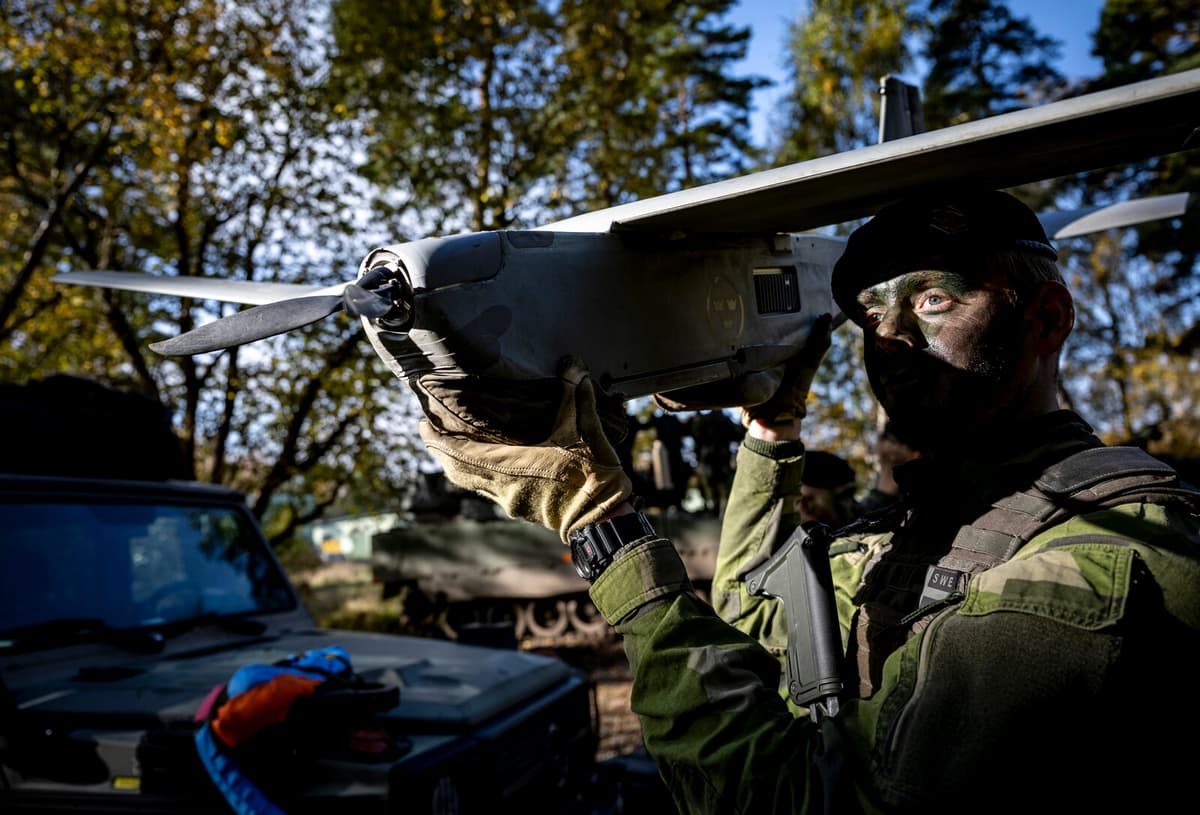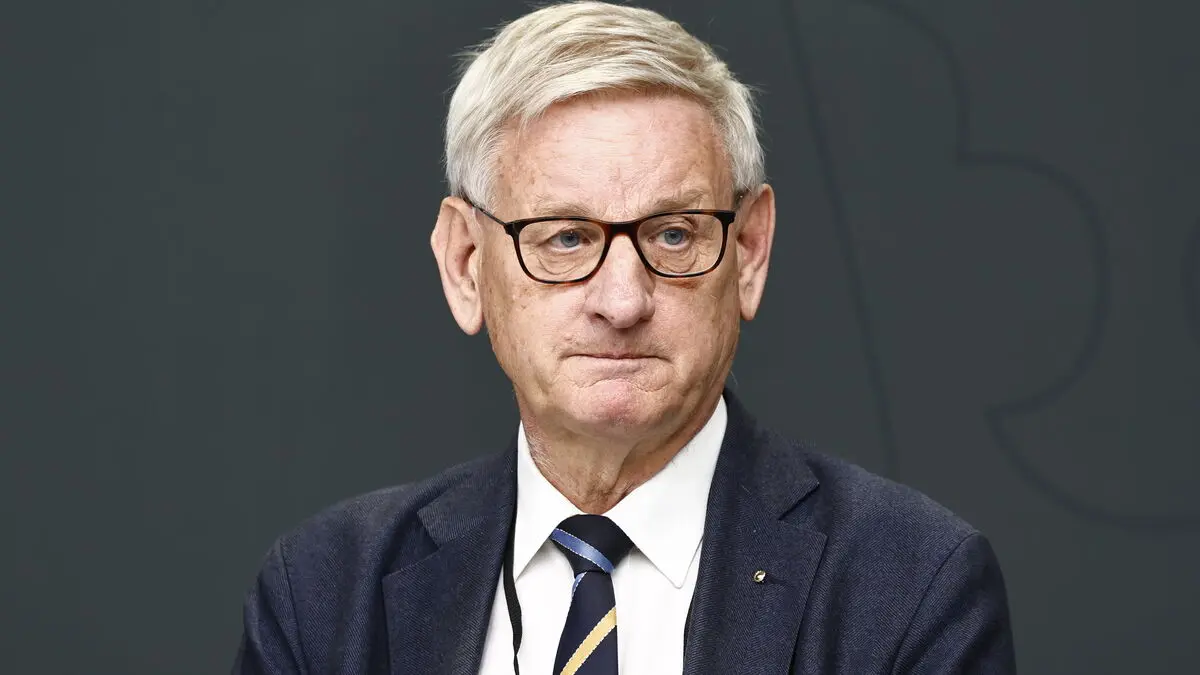At HC Andersen's airport outside Odense, around 80 students are building and flying their own drones. It is the University of Southern Denmark's (SDU) summer course that attracts international students.
Odense has become a hub for drones in Denmark. An airspace of 1,900 square kilometers attracts universities and companies to conduct test flights.
There are not many places that can offer this in Europe. It is important that drones can fly long distances – for us as a university, for companies, and now also for the defense, says Professor Ulrik Pagh Schultz Lundquist, head of SDU's drone center.
In the spring, the Defense Drone Center was launched by Denmark's Minister of Defense Troels Lund Poulsen. An investment of 725 million Danish kronor, equivalent to just over 1 billion Swedish kronor. The message was clear – Denmark must step up. From next year, 100 military personnel and civilians will work at the center in Odense, where conscripts will also be trained as drone pilots.
Hundreds of thousands per month
The urgency is palpable, just like when Prime Minister Mette Frederiksen urged the Danish defense to upgrade with her "buy, buy, buy!". The reason is the experiences from the Ukrainian front.
When Russia attacked Ukraine in 2022, there was no real production of drones in Ukraine. Now, between 100,000 and 200,000 need to be produced every month. Normally, it can take 4-6 years from the development of new technology to its implementation, in Ukraine it takes 2-4 weeks.
What is happening on the drone front is a technological leap comparable to the introduction of the machine gun during the First World War.
Ole Kværnø, retired brigadier general and head of the Center for Defense Robotics and Autonomy (CDRA), visits Ukraine every month. What he sees is a "crazy innovative and creative defense industry". It is also evident in the rest of society, where volunteer organizations provide web-based drone courses and people manufacture simple drones at home in the garage with duct tape.
Denmark takes the bill
But it is not enough to keep up with what is happening on the battlefield. CDRA, which is also based in Odense, receives monthly reports on Ukraine's operational and tactical needs and links them to orders for the defense industry. The bill is paid by the Danish state, even though most of the production takes place in Ukraine.
Denmark's defense industry cannot accelerate enough to deliver to Ukrainian needs, so we pay for the production that takes place in Ukraine, says Ole Kværnø.
"The Danish model", as the setup is called, means that the country has a unique insight into drone development in Ukraine. But the lessons cannot be copied directly. Each country, war, and time has its conditions. Therefore, CDRA also collaborates with researchers and industry – where the perspective is more long-term.
Even the Swedish defense is changing due to the drone development in Ukraine. Recently, the Swedish Armed Forces, in collaboration with, among others, the Defense Materiel Administration and Saab, have presented various projects. But the picture that has been set is that the Swedish defense is lagging behind and is late to the ball. Ole Kværnø protests against this description.
We are all slow, he states.
But some countries with relatively small defenses, such as Denmark, Estonia, and Lithuania, have been able to be faster. It is because we are so small.
"Needed a gathering force"
In late June, the Defense UAS Center was inaugurated at K3 in Karlsborg. There has been a lot of expertise in unmanned aerial vehicles since before.
It needed a gathering force. We have now been clearly designated by the Swedish Armed Forces to be responsible for the development in this area, so that it does not spread out too much, says Michael Gunnerek, head of the UAS Center.
However, it is not the same major investment as in Odense. But even Gunnerek feels the pressure, and looking at the various systems that need to be acquired in the future, it is about billions.
So far, the Swedish defense has mainly used drones for reconnaissance, and Swedish officers have mostly gained their experience from foreign service in, for example, Afghanistan.
Now it will be a different purpose, linked to national defense and a completely different volume in this in various ways, says Gunnerek.
Risks exist
Because just like in Denmark, the drones will be used in all branches of the military – in the air, on land, and at sea. And just like in Denmark, a whole new mindset is needed to become more flexible in the rapid development. It is not possible to use several years to buy the perfect weapon. Nor to buy thousands of drones that are put on shelves in warehouses where they quickly become obsolete.
Back at the airport in Odense, Professor Ulrik Pagh Schultz Lundquist sees great opportunities with drones, both civilian and military. But there are also risks. Normally, the more autonomous a drone is, the better. But when it comes to war, and ultimately to killing people, the question of control and independence becomes different.
The important thing is that it is a human who decides over the drones, he says.
I would like to help the defense work with the development of drones, we would like to have close cooperation with the defense.
Drones, or UAVs as they are also called, can be equipped with everything from combat parts such as grenades to cameras and other sensors that can be used for reconnaissance or disruption.
Drones can have both defensive and offensive capabilities.
Kamikaze drones, or patrol robots, are unmanned vehicles that carry combat parts that explode on impact. They can hover over an area and identify targets before attacking.
The size varies from small handheld to large airplane-like drones, depending on what they are used for. The cost varies from a few thousand to hundreds of millions.
Source: Total Defense Research Institute (FOI)






